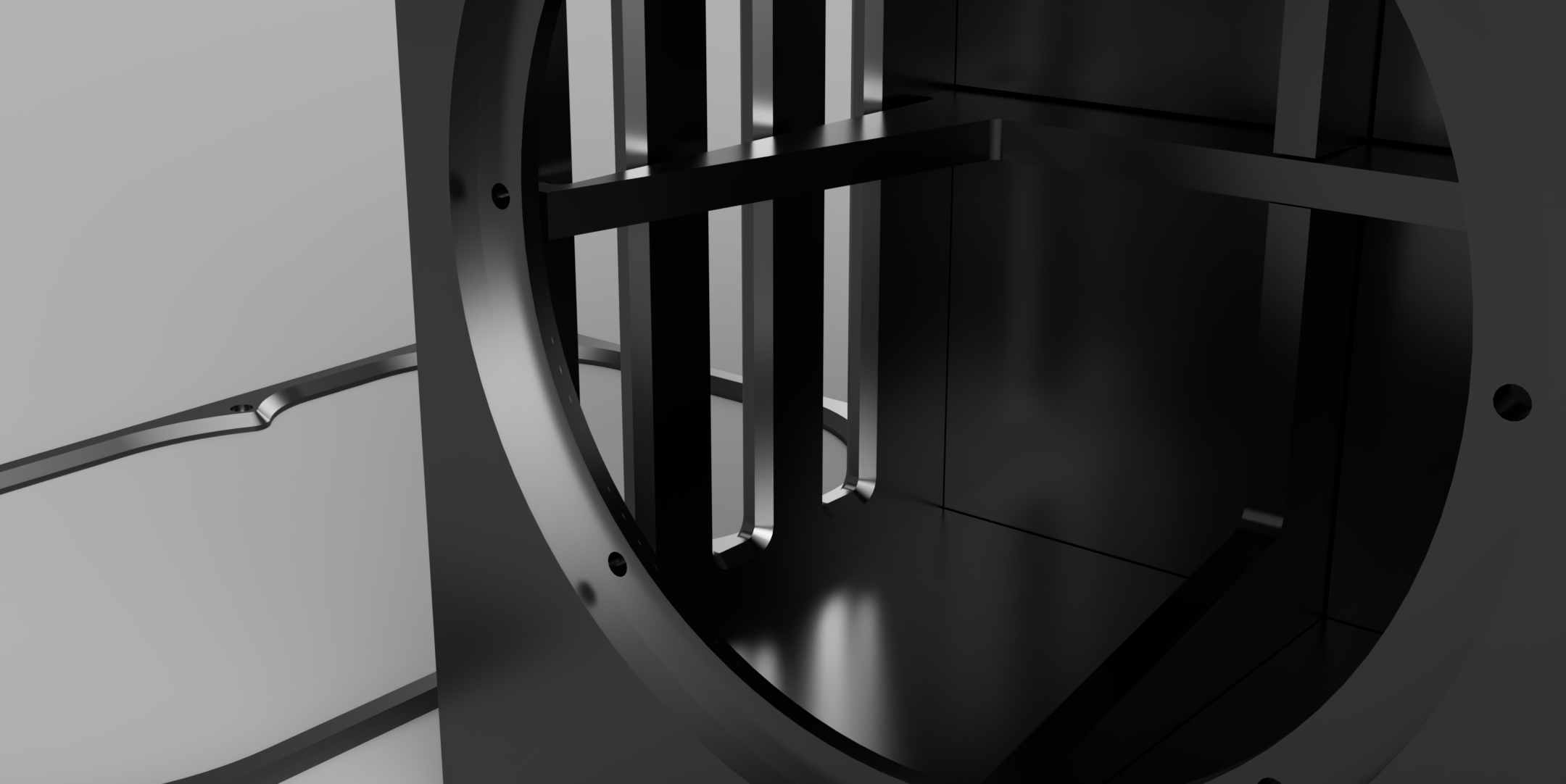Introduction
The Manta is a special speaker in many ways. Why did we make it, and what is the reason for its peculiar design? Learn about cardioid, where the name comes from - and most importantly, how did it turn out in the end?
One of the reasons behind building the Manta was attention. Not just attention around Manta itself, but in the form of brand awareness.
When people see our first offering, the SBS.1 speakers, I can understand how some will think "boring bookshelf speaker". This was intentional to an extent, as they were designed to be minimalist. To allow you to put two speakers and a subwoofer in a living room and get big sound without a lot of visual impact. But due to their small size and neutral looks, they're easy to underestimate.
Most don't understand the massive difference in dynamic capability in a 2.5-way speaker designed to play with a subwoofer, as opposed to the traditional 2-way speaker it resembles. They look similar, but it's just a different league alltogether.
As a new manufacturer who builds a somewhat anonymous product, it's easy to be underestimated. That's why the idea came to make a speaker that was "over the top" in more ways than one. Something with very high sound quality, unique solutions, striking design and with a midbass capacity beyond belief.
We obviously hoped a lot of people would purchase the Manta when it was released (and they did!). But we also hoped there would be a trickle down effect. That some people will find that they can't afford the Manta, or want something with a design that is less ..loud. And due to the Manta, the SBS.1 will be harder to pass by or underestimate.
People will no longer look at the SBS.1 and think "boring bookshelf", they will think "Hey, isn't that the manufacturer that makes the Manta? I want to know more!"
Where does the name MANTA come from?
I have a great passion for music, and find it immensly satisfying to build great speakers that bring out emotions in others as they listen to their favorite music. It's great to have a name that evokes emotion in people as well. But since we're all different with different experiences, that can be hard. Anyway, the name MANTA at least makes me emotional. And why is that? How did the name come about?
One reference is the Manta ray and how the ports in the upper chamber may resemble the form of a Manta. But the main origin of the name is actually a car, the Opel Manta. How on earth is that connected to anything you may ask? To answer that, we need to go back in time.
My late uncle was the person who originally got me into hifi back in the 80s, as he was a DIY speaker builder. He was also stuck in a wheel chair and suffered from a rare disease that he ultimately lost his life to. Being just a kid back then, I didn't really think about his wheelchair as anything other than objective fact, to me he was just the coolest guy ever. He built his own speakers, and he also had what in the 80s was a super cool car: A neon green Opel Manta.
So the MANTA is a tribute to him and how he got me into all this, now decades ago.
Design: Introduction
It was an easy and natural choice to follow the basic design principles from the SBS.1, creating an active 4-way design with dedicated midbass and subwoofers taking over at 100hz (read more about designing for subwoofers in the design story about the SBS.1 here). We just supersized everything. Twice the power, twice the capacity. A cabinet that is three times larger. I wanted it to be more powerful and dynamic than almost any other hifi speaker out there. And it is. The target (that we met) was less than 0.5% THD @ 96dB / 1m. The maximum SPL is 122dB@1m per speaker.
The concept of cardioid was also introduced, initially for the midrange only, but during development it was changed to a dual cardioid design, making it cardioid all the way down to where the subwoofers took over.
Finally ports were introduced in the baffle itself, on each side of the coax. They improve the dispersion characteristics from around 800hz and way up in the high frequency area. How? The coax driver "sees" a more narrow baffle, which is now suddenly 185mm as opposed to the real baffle width of 360mm. Diffraction from the edge are spread out in frequency and time, becoming less of an issue.
To cover the important upper bass / lower mid, we selected a stiff, light, high performance and high sensitivity 12" (!) midbass driver.
All of this adds up to a high end, controlled directivity speaker with extreme capacity.
Design: Crossover
The crossovers of the MANTA are assymetrical 1st order crossovers. This means they are primarily 1st order, ensuring crossovers with perfect frequency response and no phase shift. Further down (or up) in the frequency range, a second, 2nd order crossover is activated to ensure the roll-off is steep enough.
In addition to the natural roll-off due to the cardioid enclosure, there is also an active high pass filter at the low-end to reduce bass output. This limits driver excursion and distortion even when playing extremely loud.
Finally all digital filters are very low Q (typically below 1) to minimize ringing and artifacts, making for a very natural sounding speaker.
Design: The enclosure
It certainly looks different. But it is a result of functional design rather than trying to look weird on purpose. We already mentioned the baffle ports, and the ports on the side is what enables the cardioid dispersion that you can read more about below. Inside, rigid bracing reduce resonance and acoustically resistive dampening assist in making the cardioid work the way it is supposed to.
At the bottom we included the only bit of vanity or "for looks" feature, which is the walnut stripe that also feature the Sigberg Audio logo in silver.
The finish is high quality satin black. Included with the speakers are also black, one piece, stainless steel stands with a 4 degree tilt.The end result is a speaker that looks purposeful, some would even say menacing.
Cardioid: Why?
Traditional speakers radiate sound in all directions. This means less energy at the listening position. Severe reflections from the walls leaves you with a distorted and inferior version of the original sound.
The unique enclosure of the MANTA has a cardioid radiation pattern, directing most of the energy towards the listener. The result is better sound even in less than perfect rooms.
The vented midrange chamber reduces reflections from the side walls and the wall behind the speakers. The result is increased clarity and improved soundstage. This is what gives the MANTA its unique vocal performance, and ability to sound clear and tidy even on complex music productions
The MANTA achieves cardioid like performance down to ~80hz, improving the experience of bass pressure and punch in the listening position. The tight and consistent midbass experience is crucial for the rhythmic, dynamic nature of many music genres.
Cardioid: How?
The Manta features a dual cardioid system, where the four octaves from 100hz to 1600hz is covered by two individual cardioid systems and two drivers, instead of one. This means that instead of loosing efficiency, the system is roughly as effective as a traditional sealed system.
As the frequency range of a cardioid system increases, you'll get gradually increasing cancellation towards the front and reduced efficiency. This is avoided by setting up a cardioid system with a more narrow frequency band. Incidentally this merges well with our philosophy of having a dedicated driver in the important midbass range.
As far as I know there is no other dual cardioid speaker out there, so this is a pretty unique approach that gives the benefit of cardioid without loss of efficiency.
There are also many who wonders if the cardioid effect is placement sensitive. The answer is no. The slots on the side of the speakers actually cancel out sound as the sound leaves the speakers. It does not cancel out reflections from the walls. The sound is already attentuated when it reaches the walls in the first place.


When measured, the effect is present 0,5m from the speaker, and it's also present 2 m from the speakers. This means that the cardioid effect is present and effective regardless of how the Mantas are placed in the room. You can place the Mantas as close as 10-15cm from the wall (leaving room for cables) and still enjoy great sound!
Tuning the sound
While we are inherently science driven, it's of course not just about measuring the speakers. Listening sessions are a crucial and major part of the development. The speakers go through countless iterations of crossover / digital filter configuration, and basically all iterations has one version based on the measurements, and a subsequent variant "By ear".
This means I first tune them based on measurements on- and off-axis (attempting to balance the two), then I listen for a few days and do additional adjustments based on what I hear. Then perhaps something is difficult to get perfect, so I measure again to help me understand what the problem is. Then do some adjustments based on the measurements, and then go back to listening and additional adjustments based on the listening sessions. This way the response is continuously balanced based both on on objective data and real listening impressions over time, and across a broad range of music genres.
The result
The Manta took about 18 months to develop, and has taken the breath away from both audiophiles, studio engineers, producers and reviewers. We set out to create a flagship, endgame type speaker and, in my humble opinion, mission accomplished.
Combined with our subwoofers the MANTA is a true full range speaker. Everything from fragile female vocal performances to full on heavy metal is presented in a lifelike and engaging way. Due to its unique dispersion characteristics combined with a point source driver, the Manta presents a soundstage and immersiveness unlike almost any other speaker out there.
Unbelievably it combines this inherent, true to life sound with a dynamic capacity that is also unlike almost any other speaker out there. There is virtually no limit to how loud it can play. Even at elevated levels, the sound is rich, effortless, uncompressed and fatigue free.
The cardioid loading also means this awesome sound can be experienced even in less than perfect rooms.
In conclusion, I am extremely happy with both the MANTA itself and the reception it has received!
Learn more about and purchase the Manta from the MANTA product page.
Looking for even more details from the development journey? Check out the MANTA development threads on ASR (English) or Hifisentralen (Norwegian)







